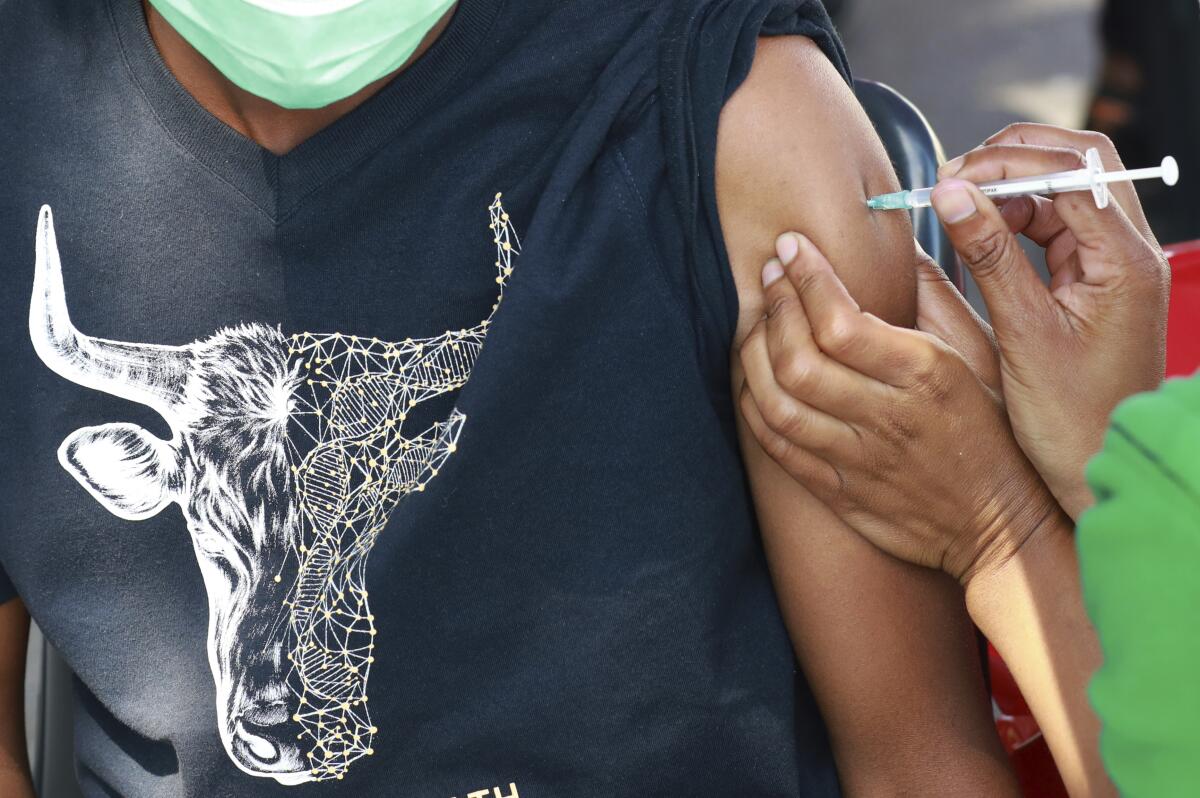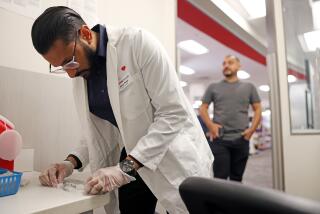Op-Ed: COVID vaccines need to be evolving much faster

- Share via
The virus that brought us COVID-19 is now going through accelerated evolution. Our vaccines must do the same.
The Omicron wave was by far the worst yet for the United States, with, at its peak, well over 1 million new cases a day, nearly 160,000 COVID-19 hospitalizations, and almost 4,000 deaths per day. That was attributed to the BA.1 variant, the most densely mutated version of the SARS-CoV-2 coronavirus since the pandemic’s origin. About 40% to 50% of Americans were likely infected with this virus in the brief span of 10 weeks.
Now we’re facing even worse Omicron family variants, BA.2 and BA.2.12.1.
For perspective, Omicron’s BA.1 was about 50% more infectious than Delta, the variant it replaced. At the time, it was hard to conceive of a version of the virus that could be more contagious. But BA.2, which out-competed it here in the U.S., is 30% more transmissible than BA.1. And BA.2.12.1, now overtaking BA.2, is another 25% more infectious than BA.2. Accordingly, in recent months since Omicron was first recognized in the United States in late November, we’ve gone from a hyper-transmissible virus strain to two more that take that problem to another level.
To make matters worse, the Omicron-specific vaccines that are in clinical testing by multiple vaccine manufacturers, such as Moderna and Pfizer, use the BA.1 spike and will most likely not be adequately protective against BA.2.12.1 infections or other new Omicron family variants.
The latest variants have appeared in rapid succession, a worrying sign that the virus will prove adaptable over time. Already, the new Omicron variants are thriving in part because they have become more difficult for our immune system to “see.” They don’t look like a prior version of the virus to which we have been exposed or against which we have been vaccinated.
That means even the millions of people who had Omicron BA.1 infections earlier this year are still vulnerable to infection with BA.2.12.1, especially if they’re unvaccinated. That will promote spread and prolong the pandemic. Moreover, people who get BA.2.12.1 infections may be susceptible to “long COVID,” the chronic condition that can lead to significant functional impairment.
Although existing vaccines are not particularly helpful at preventing infections with or transmission of the new BA.2 variants, they do still work, especially with boosters, to protect against hospitalizations and deaths. We also have the Paxlovid pill pack for treatment of any of these variants, which has been shown to reduce hospitalizations and deaths by 89% in people deemed at high risk. While Paxlovid is variant-proof at this time, resistance can emerge, and there have been reports of early relapse, a problem that has not yet been adequately explained.
Where does this leave us? The new BA.2 variant is clearly going to add to the increasing cases of COVID-19 in the United States, now averaging about 60,000 per day, up 50% in the last two weeks but grossly underreported because of at-home testing and individuals who aren’t tested at all. There will be an increase in hospitalizations and deaths, especially among Americans age 50 and older, who account for 92% of the deaths in the pandemic.
It is unlikely these major outcomes of the BA.2.12.1 variant will reach the profound levels of the original Omicron wave here, because there is certainly some cross-immunity from prior exposure to BA.1. So we need to be gearing up for what’s likely to come next: further Omicron evolution and a new variant that has little to do with Omicron.
In South Africa, a new, fourth wave has begun with BA.4 and BA.5, which share some properties with the BA.2.12.1 that we are dealing with. There are many other Omicron subvariants that are cropping up throughout the world that are not yet well characterized but could potentially take the place of the ones dominating now.
There is also an overwhelmingly high risk of a completely new variant for multiple reasons. The millions of immunocompromised people, any one of whom could have accelerated evolution of the virus within them and subsequently transmitted the virus. The huge populations around the world where vaccines have made negligible inroads. Abundant animal reservoirs, with spillover to humans already documented. The higher incidence of coinfections in people, such as Omicron and Delta forming “Deltacron” — lineages that fortunately, to date, have not taken root.
While we would all like the pandemic to be over, we do not appear to be witnessing the end. The likelihood of more noxious variants ahead is high, and our preparedness is poor.
Governments around the world need to make it a priority to support development of variant-proof vaccines, such as against the entire sarbecovirus family and all anticipated variants. The U.S. pushed for the first wave of vaccines with an initiative called Operation Warp Speed, and that push should continue. In the months ahead, our current vaccines may offer diminished protection against hospitalization and death.
Likewise, more oral drugs beyond Paxlovid need accelerated development, and there are many very good candidates in the pipeline.
Ignoring the warnings will not make the virus go away. It keeps getting fitter and more transmissible, while our human qualities of fatigue and complacency feed right into the virus’s remarkable opportunism.
Eric J. Topol is a professor of molecular medicine at Scripps Research and author of the newsletter Ground Truths.
More to Read
A cure for the common opinion
Get thought-provoking perspectives with our weekly newsletter.
You may occasionally receive promotional content from the Los Angeles Times.










